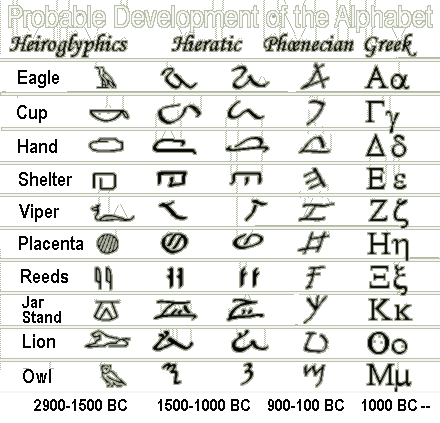- Types of Writing systems
- logographic (ideographs, logographs)
- phonographic
- syllabary
- alphabet
- The Development of Writing Systems
- Alphabets usually begin as logographic systems
- the rebus problem
Rebus Problem No. 1 
Chinese maintains a logographic system
- the rebus problem
- Which develop into syllabic systems
- Which develop into syllabaries and alphabets
- Advantage of logographs: they are artistic
- The Phànetian Alphabet
- The Latin alphabet certainly goes back to the Phànician
- Phànecian ¡ Greek ¡ Latin
- The origin of Phànician is hazy, but it may derived from
Egyptian heiroglyphs via Proto- Canaanite.
- Heiroglyphs developed into heiratic, then demotic
- Modern Arabic is a descendent of demotic, maybe Latin, too
- Cyrillic (Russian, Bulgarian, Macedonian, Serbian) developed from Greek with a few letters from Hebrew
- Japanese uses not one but two syllabaries, the Katakana and Hiragana
- Writing systems apparently began with drawings which represented the reference of stories. Pictures used convey the meaning of words at logograms but they are unwieldy because so many are required (one for every meaning). It is possible to reduce the number of symbols by using pictures in rebusses, but they present their own problem. The final resolution to all the problems of logograms is either a syllabary or alphabet, where one symbol represents a syllable or phoneme. However, Chinese has resolved the rebus problem by simplifying and combining logograms for new meanings.